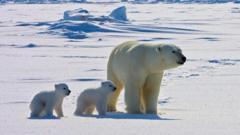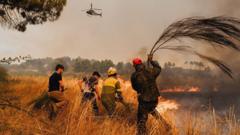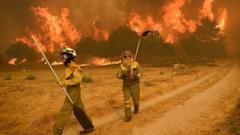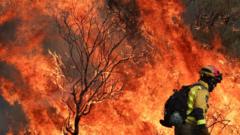As the Arctic region continues to warm, polar bears are increasingly at risk of contracting various diseases linked to changing environmental conditions, according to a recent study. This research underscores the intersection of climate change and wildlife health, revealing that polar bears are now exposed to pathogens they had previously encountered far less frequently.
Analyzing blood samples collected from polar bears in the Chukchi Sea—a region straddling Alaska and Russia—scientists compared data from the late 1980s to samples collected three decades later, from 2008 to 2017. The results indicated a notable increase in the presence of pathogens such as viruses, bacteria, and parasites in recent samples.
Dr. Karyn Rode, a wildlife biologist with the US Geological Survey, noted that the research reflects broader shifts in the Arctic ecosystem driven by significant sea ice loss and increased time spent on land by these animals. The study specifically monitored six pathogens believed to be primarily linked to land-dwelling species but had also been found affecting marine life, including species targeted by polar bears in their hunt.
“If we look at the past 30 years, we've seen alarming declines in sea ice, and the polar bears are adapting by spending extended periods on land,” said Dr. Rode. “We wanted to investigate whether this might alter their exposure to diseases that are more commonly associated with terrestrial environments.”
The findings reveal that two parasites—responsible for toxoplasmosis and neosporosis—along with two types of bacteria implicated in rabbit fever and brucellosis, and canine distemper virus have become markedly more prevalent in the polar bear population studied. Traditionally robust against diseases, the bears are now facing an uphill battle as their habitat changes and food sourcing suffers.
Polar bears, numbering around 26,000 worldwide, predominantly thrive in Canada, with populations extending to the United States, Russia, Greenland, and Norway. They are classified as vulnerable by the International Union for Conservation of Nature, with climate change recognized as a critical factor in their ongoing decline.
Research also indicates that polar bears, reaching lengths of about three meters and weighing close to 600 kilograms, typically consume up to 45 kilograms of blubber in a single meal. Their superior sense of smell allows them to detect prey from distances of up to 16 kilometers, and they are capable swimmers, traversing up to 100 kilometers offshore at speeds up to 10 kilometers per hour.
Aside from health concerns, the inability of polar bears to find sufficient calories during periods without sea ice jeopardizes their survival as top predators. Dr. Rode emphasized the interconnectedness of Arctic species, explaining that increased pathogen exposure for polar bears hints at wider ecological shifts affecting other species residing in the region.
The findings of this crucial research are published in the scientific journal PLOS One.



















